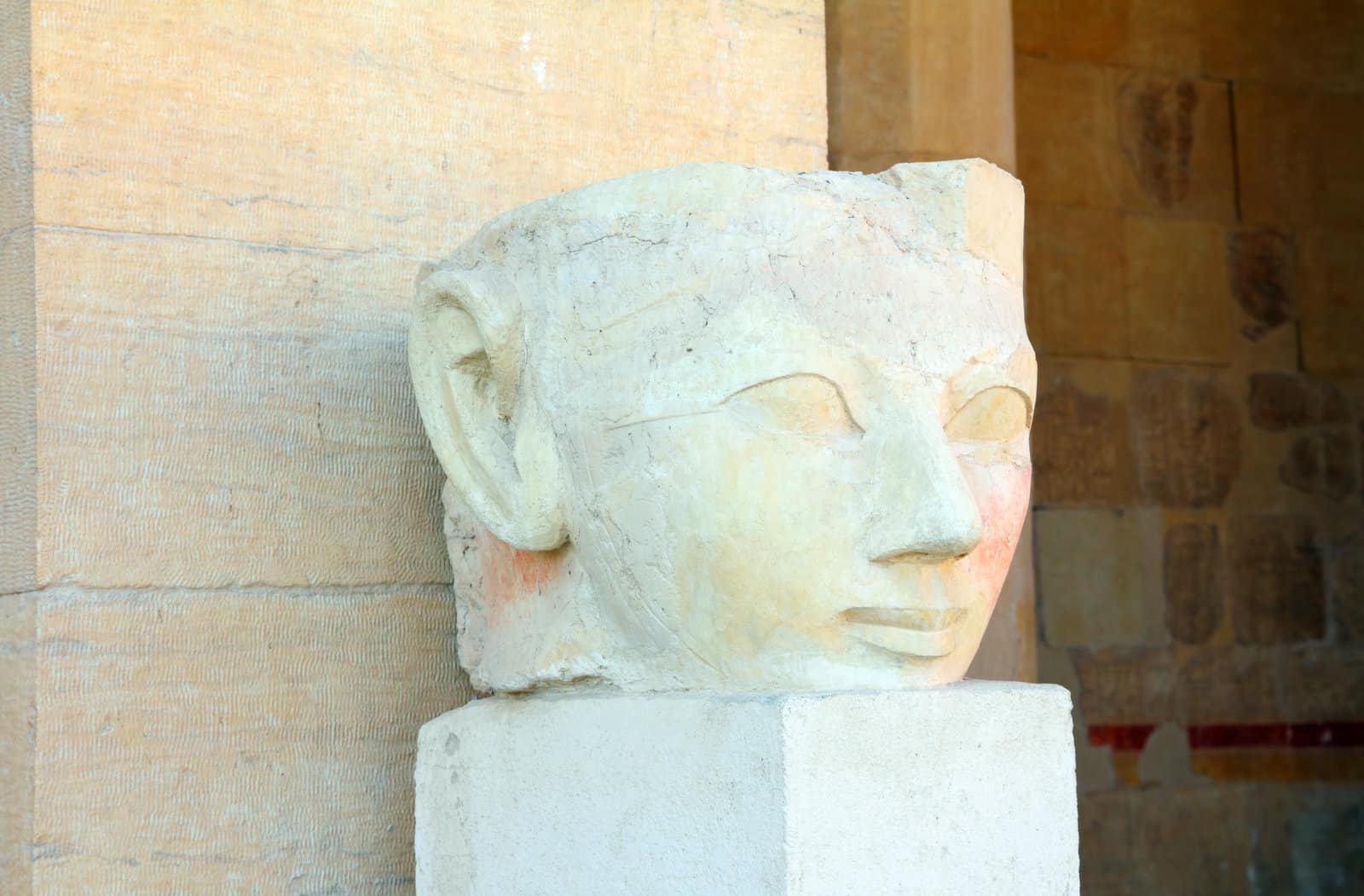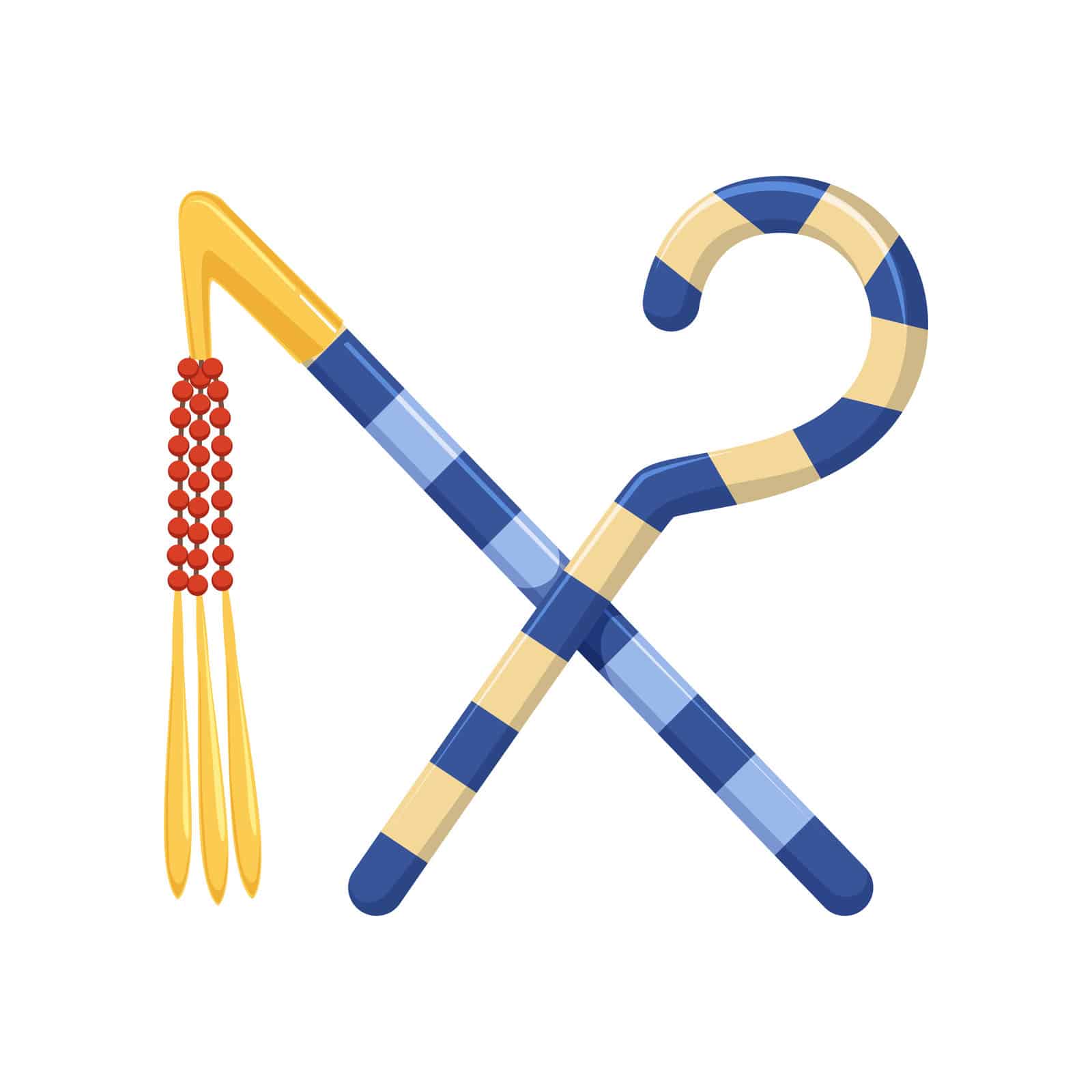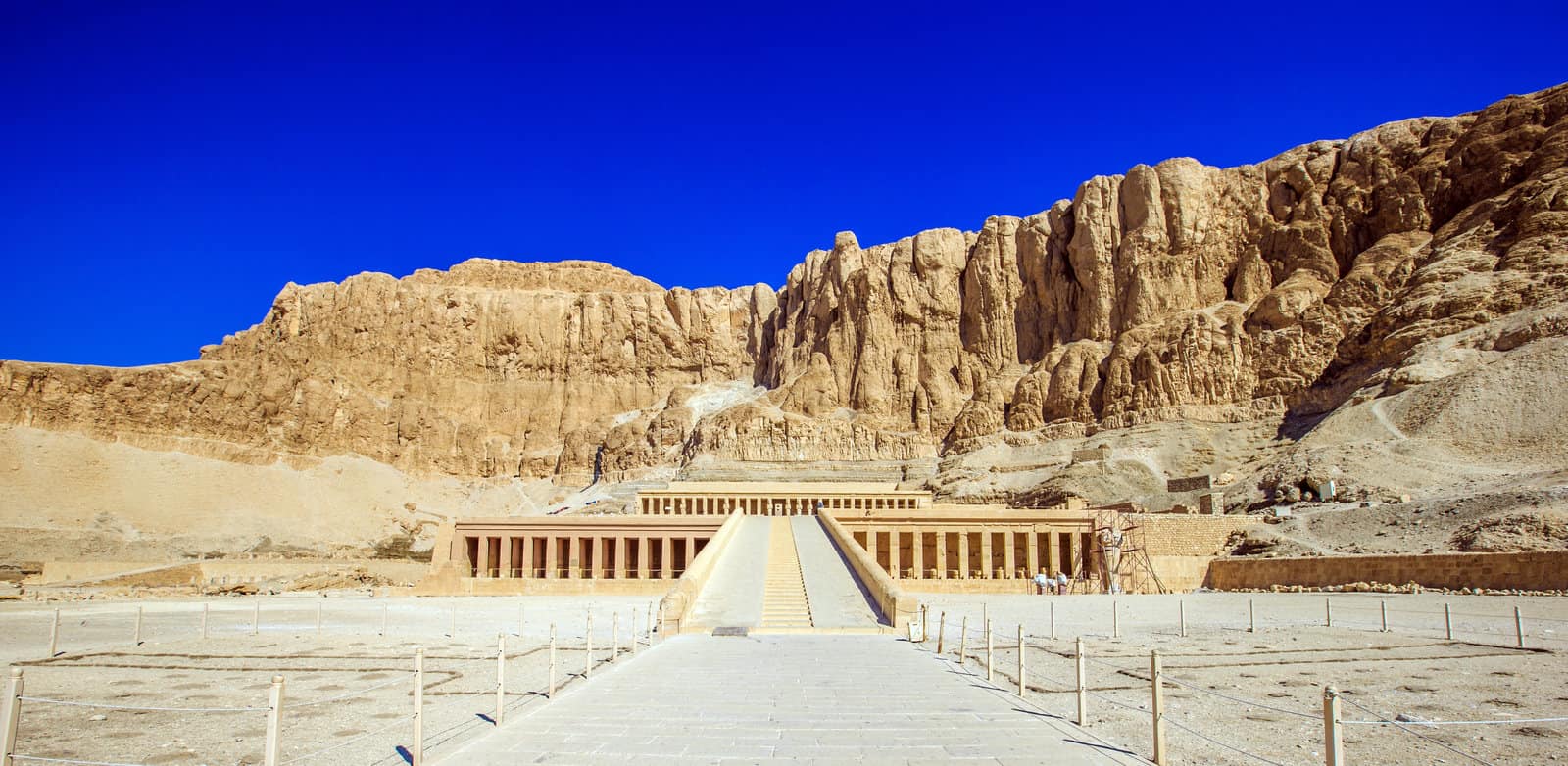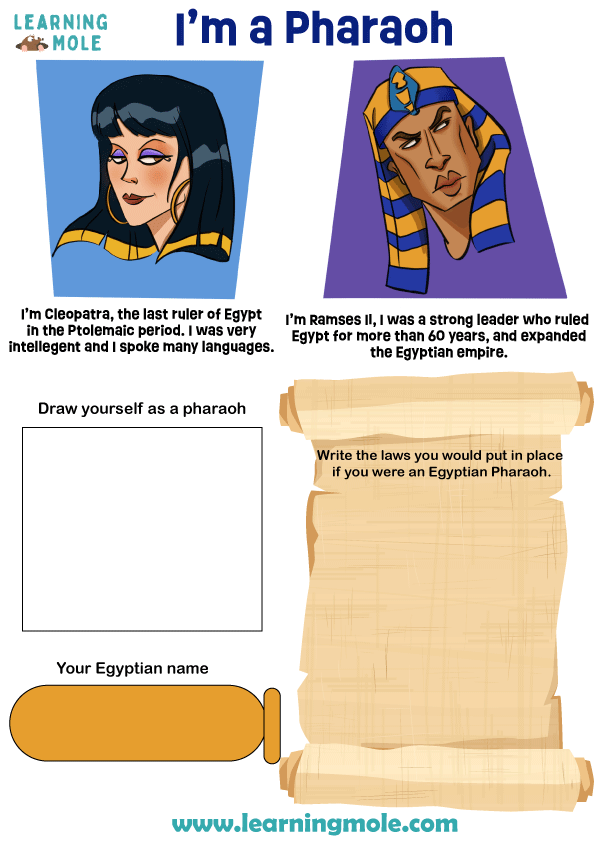
Who was the First Woman Pharaoh? 8 Interesting Questions Answered About Hatshepsut
Who were the pharaohs?
The pharaohs were the kings of Egypt who were responsible for infrastructure, military, and religious duties. The Egyptians believed that their pharaoh was the representative for their gods on earth, and therefore were caretakers for the spiritual well being of their people. Pharaoh’s were responsible for the building of monuments which would honour the gods as well as carrying the story of their triumphs as a leader. The afterlife of pharaoh’s were guaranteed by their story being remembered as the Egyptians believed that after you are forgotten by the living you no longer live in the afterlife.
Who was the first woman pharaoh?
The first woman pharaoh was a woman called Hatshepsut (who also went by the name Maatkare). You may think that Cleopatra or Nefertiti were the first women to rule as Pharaoh of Egypt as their names are much better known than Hatshepsut. The reason she is less remembered is quite interesting so will we cover that later. She ruled Egypt as regent for 7 years before taking the title and powers of Pharaoh, and was the first woman to do so. She lived between 1507 BCE and 1458 BCE and ruled as the fifth pharaoh of Egypt’s eighteenth dynasty from 1479 BCE until her death.

How to pronounce Hatshepsut:
Its easy once you break it up into three parts:
- Hat (pronounced like the hat you put on your head)
- Shep (like the start of shephard)
- Sut (pronounced ‘soot’)
How did Hatshepsut become pharaoh?
Hatshepsut was the daughter of a pharaoh and therefore descended directly from the royal bloodline, however because she was a woman this was not enough to claim her the title of pharaoh. Egyptian pharaoh’s had always been men and they considered this traditional role an upkeeping of truth, which was a key duty of the pharaoh. However, due to the lack of male heirs in her lineage Hatshepsut was given an opportunity to step up into the role of regent and later pharaoh.
The pharaoh Thutmose the first was Hatshepsut’s father and she was his only full heir. As she was a woman this meant a son from his harem of low-born wives would be pharaoh next. Hatshepsut was married to her half-brother Thutmose the second, making her queen. However, they also only produced one heir, a daughter. Therefore, the next pharaoh would be a son born from Thutmose the second’s harem, a boy aptly named Thutmose the third.
The only problem with Thutmose the third becoming pharaoh was that he was only two years old when his father, the pharaoh, died. Teenage pharaoh’s were relatively common at this time but being only two years old Thutmose the Third had at least fifteen years of growing up to do before he came of age. This was how Hatshepsut took over as regent and started to build up her legitimacy through acting as kings did.
Hatshepsut made sure she knew the role of king and fulfilled it well, building temples and obelisks, organising military and trade expeditions, and performing religious ceremonies. Hatshepsut has watched her father. Thutmose the first, working and learned a lot about leadership from him. Her initiative to legitimize her position would pay off as after seven years acting as regent she secured the title of pharaoh, becoming a co-king with Thutmose the third.
What was Hatshepsut known for? Was Hatshepsut a good pharaoh?
The success of pharaoh’s depended on whether they kept power and whether they fulfilled the duties expected of them as pharaoh. These were:
Religious duties
From a young age Hatshepsut had been taking on religious roles and duties, taking on the role of God’s Wife to the god Amun before she was ten years old, this meant she was tutored in politics, religion and economics which would be helpful in her later role as pharaoh. She also claimed that she was related to the gods in descriptions of her birth.
Infrastructure
Hatshepsut made sure that large infrastructure projects were completed to tell the story of her reign as well as to worship the gods.
Trade
Hatshepsut focused largely on trade expeditions rather than military campaigns throughout her reign. Her biggest success was a trade link made with the land of Punt. Historians still aren’t sure exactly where Punt is but we know that it was south east of Egypt and other expeditions to Punt had not been successful.
Hatshepsut’s expedition to Punt was a huge success and brought back valuables such as ebony (a very durable wood) and trees that produced myrrh (a sap from the tree which they believed to have medical benefits) and incense (a pleasant smelling material which is used in religious ceremonies). All these things would have been appreciated by the nobles who would support her as pharaoh.
Military
Despite focusing on trade over military expeditions Hatshepsut kept the peace in Egypt keeping up an army that could defend them incase of attack. She also depicted herself as fighting alongside her army in paintings, however it is important to remember that those paintings only show what she wanted to represent. We don’t know if she actually fought with her soldiers as there is little evidence to support this.
How did Hatshepsut present herself as pharaoh?
Hatshepsut took several measures to ensure she would be seen as a powerful leader, and a legitimate pharaoh. She changed her name, the way she presents her gender, and the story of her birth to add to her status as pharaoh.
Name
Hatshepsut changed the name written to describe her in writings to Maatkare (pronounced: mah-at-cah-ray) (though we will continue to call her Hatshepsut to keep things simple). This new name had symbolic meaning that linked to what she ideally wanted to represent as pharaoh. The name is made up of three main parts:
Maat (pronounced: mah-at) = Truth
Ka (pronounced: cah) = Soul
Re (Pronounced: ray) = The sun god
Roughly translating to ‘truth is the soul of the sun god’ this new name related Hatshepsut to the values of truth, the soul, and the gods. These were all very important to the role of pharaoh as the representative of the gods who represents the truth balance kept in society.
Gender
Hatshepsut is always described as a woman in glyphs, and uses feminine pronouns throughout descriptions of her and her reign as pharaoh, but in visual representations she is often portrayed as a man. While earlier depictions of her show a woman in a pharaohs headdress later adaptations show her with a masculine form and used imagery typical of a male pharaoh. She even had a fake beard in carvings and statues!
Egyptian art at the time often depicted things metaphorically rather than how they are in reality, thus by depicting herself as a man in art Hatshepsut was not saying that she was a man, rather that she was equal to male pharaohs. She often depicted herself holding a crook and flail, imagery related to Osiris, this first king of Egypt, which depicted her rightful place as pharaoh.

The Crook and flail – The crook represents kingship and leadership of the kingdom and the flail represented the land’s fertility and ability to grow crops. The role of the pharaoh was also thought to be related to the agricultural prosperity of the land. It was believed that if the gods did not approve the pharaoh the Nile river would dry up leading to famine, thus the flail was an important symbol in the image of the pharaoh.
Birth Story
Hatshepsut also mythologized the story of her birth to represent herself as being related to the gods. In her temple the story of her birth is inscribed in the way she wanted it to be represented. It described the god Amun, as her true father having been disguised as her father Thutmose the first. This meant that she would be blessed by the gods and imbued “with life, health, and strength, and all gifts, I will make her appearance above the gods, because of her dignity of king”. By changing the story of her birth, Hatshepsut was able to legitimize her abilities as a pharaoh, by making those abilities god given.
Why did the pharaohs want to be remembered? Why was Hatshepsut forgotten?
The ancient Egyptians believed that their pharaoh’s lived on after death in an afterlife. This belief is why pharaoh’s were buried in elaborate tombs and mummified to preserve their physical body. Pharaoh’s were also buried with servants, animals, and treasures which they may need in the afterlife.
However, this afterlife was only assured as long as living people remembered them, hence why the pharaoh’s commissioned buildings carved with the stories of their reign and triumphs in an attempt to assure their peaceful afterlife. Hatshepsut was no exception as she created many monuments to her achievements, painting a history of her reign as the first female pharaoh.
Hatshepsut’s history was unfortunately largely forgotten until around a hundred years ago robbing her of the peaceful afterlife her infrastructure works were meant to protect. Why this happened we cannot be exactly sure, as there were no records kept of this action as is was meant to go unnoticed so that her work would be lost to time.
Historians believe that her time as pharaoh was covered up by Thutmose the Third or someone in a similar position of power. Their reasons for doing this could be to either make the story of Thutmose the Third’s lineage and rise to power easier to follow or to maintain the balance of truth as they saw it, that men were the leaders.
How did archeologists learn about Hatshepsut?
Although Hatshepsut’s tomb was excavated in 1904 by James Carter (the archeologist who also discovered the tomb of Tutankhamun) her mummy had been removed from that tomb earlier in history, so they were unable to find her.
In 2007 a tooth found in a tomb was matched to a mummy believed to be Hatshepsut and DNA tests also showed that the mummy was genetically related to Ahmose (Hatshepsut’s mother). This was a huge breakthrough for historians and archeologists who know believe we have found the mummy of Hatshepsut. The mummy believed to be Hatshepsut is held in the National Museum of Egyptian Civilisation.
The thorough inscriptions in her tomb helped historians to put together the story of her reign despite the attempts to remove her from history.
How did Hatshepsut die?
The real answer is that we aren’t exactly sure, historians have a few different theories but we do know that Hatshepsut was in poor health when she died. The tooth which matched Hatshepsut to her mummy was removed before her death and so she may have gotten an infection from this procedure as the ancient Egyptians knew less about germs and keeping wounds clean.
Another theory is that Hatshepsut died from cancer, archeologists were able to conduct tests on the mummy of Hatshepsut and discovered that she had cancer at the time she died. Archeologists believe this may have been caused by a skin cream she was using that contained an ingredient ancient Egyptians did not know caused cancer.
Even if she did have cancer we cannot know for certain that it was cancer that killed her. This is one of the many mysteries surrounding Hatshepsut’s life.
Do Hatshepsut’s temples still exist?
Yes, you can visit…
The Mortuary Temple of Hatshepsut

The most well-known and extensive architectural project of Hatshepsut’s reign is the Temple of Hatshepsut. This is also where Hatshepsut was buried. Although it also suffered damages that attempted to remove Hatshepsut from her history this building highlights her successes as a pharaoh such as her trading expedition to Punt. There were even a large amount of myrrh trees brought from Punt which were replanted in front of this temple. If you visit the temple today the stumps of some of these trees are still there, calcified by time and heat.
The Karnak Temple Complex
This complex of tombs is the second most visited historic site in Egypt and is made up of many different buildings, as well as other constructed obelisks and archways. Hatshepsut restored the temple at Karnak after it had been previously damaged and erected two obelisks at Karnak which were the tallest in the world at the time. If you visit Karnak one of these obelisks are still standing today.
Hatshepsut’s largest contribution to the Karnak complex was the Chapelle Rouge also known as The Red Chapel of Hatshepsut. Although this chapel was started during Hatshepsut’s reign the decorations inside only show Thutmose the Third which tells us that the decoration of the temple was probably completed after her death. This entire chapel was deconstructed during the reign of Thutmose the third, following her death as a part of the erasure of her legacy and was not reconstructed until 1997! The reconstruction is made up of all the original materials and it can be visited today at the Karnak Open Air Museum.
Speos Artemideos
This site contains two temples which are dedicated to the goddess Pahket. These temples are built into the cliff side and Hatshepsut used this temple to given an oration against other leaders and their leadership, saying it was not approved by the gods. This gave legitimacy to Hatshepsut as she was connected with the gods and their wishes according to these glyphs. If you visit the temple today you will see that Hatshepsut’s name is removed as well as her image by Seti, a much later pharaoh, who replaced it with his own image and name.
Read more about amazing places to visit in Egypt in our article.
Conclusion
Hatshepsut was the first woman to rule as pharaoh over Egypt, she like many other powerful leaders in history, used representations of herself to create an image of a powerful pharaoh. She maintained peace in Egypt, completed building projects, and created new trade routes. Despite her successful reign, men in power after her including Thutmose the third tried to remove all traces of her legacy. This was cruel as they not only tried to erase her achievements but also in ancient Egyptian beliefs this would rob her of a peaceful afterlife.
Due to the efforts of archeologists and historians we can now learn about the great work of Hatshepsut once again and keep her legacy well recorded so she may rest in peace.
If you enjoyed this content why not dive into some more historical eras – check out these articles: Vikings History, Ancient Rome, Greek Mythology – Medusa, Native American History. Victorian Era, Ibn Khaldun or Celts
Why not subscribe for as little as £1.99 per month to access over 1000 fun educational videos!



Leave a Reply